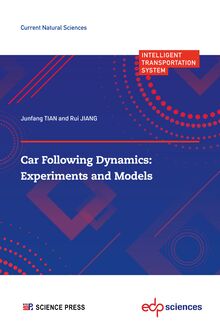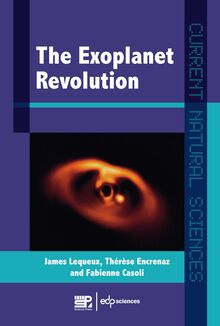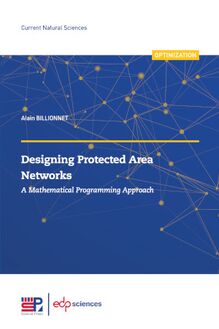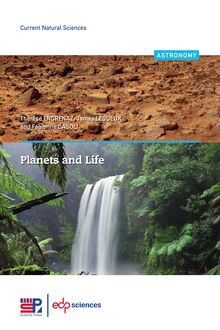-
 Univers
Univers
-
 Ebooks
Ebooks
-
 Livres audio
Livres audio
-
 Presse
Presse
-
 Podcasts
Podcasts
-
 BD
BD
-
 Documents
Documents
-
- Cours
- Révisions
- Ressources pédagogiques
- Sciences de l’éducation
- Manuels scolaires
- Langues
- Travaux de classe
- Annales de BEP
- Etudes supérieures
- Maternelle et primaire
- Fiches de lecture
- Orientation scolaire
- Méthodologie
- Corrigés de devoir
- Annales d’examens et concours
- Annales du bac
- Annales du brevet
- Rapports de stage
La lecture à portée de main
Planets and life , livre ebook
166
pages
English
Ebooks
2021
Écrit par
Thérèse Encrenaz Lequeux James Casoli Fabienne
Publié par
EDP Sciences
Obtenez un accès à la bibliothèque pour le consulter en ligne En savoir plus
Découvre YouScribe en t'inscrivant gratuitement
Découvre YouScribe en t'inscrivant gratuitement
166
pages
English
Ebook
2021
Obtenez un accès à la bibliothèque pour le consulter en ligne En savoir plus
Publié par
Date de parution
20 mai 2021
Nombre de lectures
0
EAN13
9782759825707
Langue
English
Poids de l'ouvrage
18 Mo
The Earth is the only planet in the Solar System where liquid water is present on the surface, a condition that seems necessary for the development of life. Its sisters Venus and Mars are extremely different. Why did these three planets, born under fairly comparable conditions, evolve to the conditions we observe today? Understanding the physical or chemical factors that are at the origin of such divergent evolutions is a first step in an approach to the problem of the origin of life on Earth.
Publié par
Date de parution
20 mai 2021
Nombre de lectures
0
EAN13
9782759825707
Langue
English
Poids de l'ouvrage
18 Mo

Ebooks
Visual Rehabilitation of Stroke
Carlo Aleci


Ebooks
Car following Dynamics: Experiments and Models
Junfang TIAN, Jiang Rui

Ebooks
Techniques
Car following Dynamics: Experiments and Models
Junfang TIAN, Jiang Rui
160 pages
English

Ebooks
Atomic Clusters
Michel Broyer, Patrice Mélinon

Ebooks
Sciences formelles
Atomic Clusters
Michel Broyer, Patrice Mélinon
416 pages
English

Ebooks
A Monograph of the Genus Ulota s.l.
Qing-Hua WANG, Yu Jia

Ebooks
Science de la nature
A Monograph of the Genus Ulota s.l.
Qing-Hua WANG, Yu Jia
324 pages
English

Ebooks
Sign Pattern for Generalized Inverses
Changjiang BU, Lizhu SUN, Yimin Wei

Ebooks
Sciences formelles
Sign Pattern for Generalized Inverses
Changjiang BU, Lizhu SUN, Yimin Wei
234 pages
English

Ebooks
Practical PID Handbook
Daniel Lequesne


Ebooks
The Chinese botanical gardens
Hongwen HUANG

Ebooks
Science de la nature
The Chinese botanical gardens
Hongwen HUANG
442 pages
English

Ebooks
The Exoplanets Revolution
Lequeux James, Thérèse Encrenaz, Casoli Fabienne

Ebooks
Sciences formelles
The Exoplanets Revolution
Lequeux James, Thérèse Encrenaz, Casoli Fabienne
215 pages
English

Ebooks
The Milky Way
Françoise Combes, Lequeux James

Ebooks
Sciences formelles
The Milky Way
Françoise Combes, Lequeux James
195 pages
English

Ebooks
The planetary ocean
Michèle Fieux, Ferris Webster

Ebooks
Science de la nature
The planetary ocean
Michèle Fieux, Ferris Webster
580 pages
English

Ebooks
Interdisciplinary Research of Magnetic Fields and Life Sciences
Xin ZHANG and Junfeng WANG

Ebooks
Sciences formelles
Interdisciplinary Research of Magnetic Fields and Life Sciences
Xin ZHANG and Junfeng WANG
458 pages
English

Ebooks
Designing Protected Area Networks
Alain Billionnet

Ebooks
Sciences formelles
Designing Protected Area Networks
Alain Billionnet
372 pages
English

Ebooks
Introduction to Abstract Algebra
Libin Li, Kaiming Zhao

Ebooks
Sciences formelles
Introduction to Abstract Algebra
Libin Li, Kaiming Zhao
186 pages
English

Ebooks
A Monograph of the genus Microtoena (Lamiaceae)
Wang Qiang

Ebooks
Science de la nature
A Monograph of the genus Microtoena (Lamiaceae)
Wang Qiang
150 pages
English

Ebooks
Planets and life
Thérèse Encrenaz, Lequeux James, Casoli Fabienne

Ebooks
Sciences formelles
Planets and life
Thérèse Encrenaz, Lequeux James, Casoli Fabienne
166 pages
English
-
 Univers
Univers
-
 Ebooks
Ebooks
-
 Livres audio
Livres audio
-
 Presse
Presse
-
 Podcasts
Podcasts
-
 BD
BD
-
 Documents
Documents
-
Jeunesse
-
Littérature
-
Ressources professionnelles
-
Santé et bien-être
-
Savoirs
-
Education
-
Loisirs et hobbies
-
Art, musique et cinéma
-
Actualité et débat de société
-
Jeunesse
-
Littérature
-
Ressources professionnelles
-
Santé et bien-être
-
Savoirs
-
Education
-
Loisirs et hobbies
-
Art, musique et cinéma
-
Actualité et débat de société
-
Actualités
-
Lifestyle
-
Presse jeunesse
-
Presse professionnelle
-
Pratique
-
Presse sportive
-
Presse internationale
-
Culture & Médias
-
Action et Aventures
-
Science-fiction et Fantasy
-
Société
-
Jeunesse
-
Littérature
-
Ressources professionnelles
-
Santé et bien-être
-
Savoirs
-
Education
-
Loisirs et hobbies
-
Art, musique et cinéma
-
Actualité et débat de société
- Cours
- Révisions
- Ressources pédagogiques
- Sciences de l’éducation
- Manuels scolaires
- Langues
- Travaux de classe
- Annales de BEP
- Etudes supérieures
- Maternelle et primaire
- Fiches de lecture
- Orientation scolaire
- Méthodologie
- Corrigés de devoir
- Annales d’examens et concours
- Annales du bac
- Annales du brevet
- Rapports de stage





